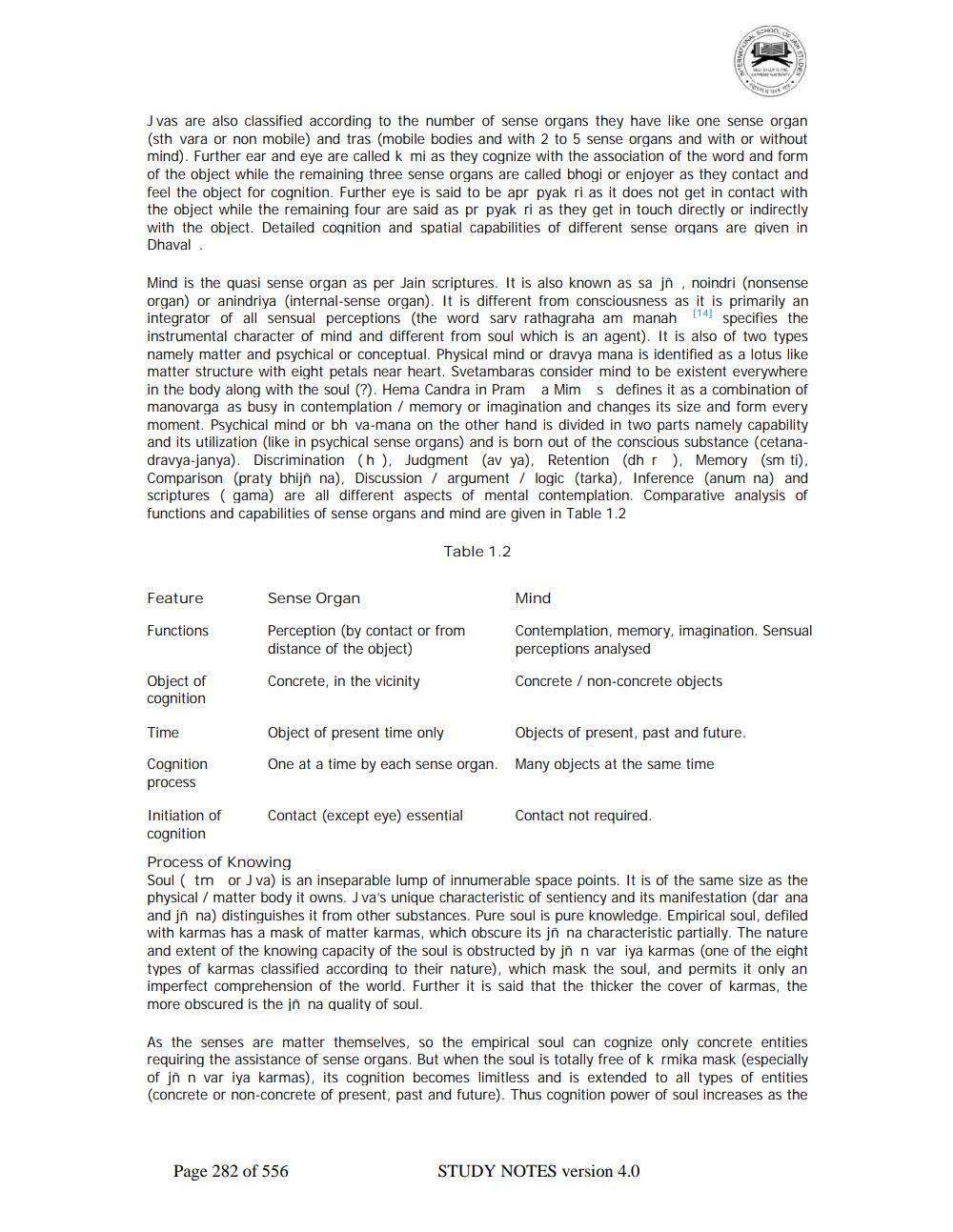________________
J vas are also classified according to the number of sense organs they have like one sense organ (sth vara or non mobile) and tras (mobile bodies and with 2 to 5 sense organs and with or without mind). Further ear and eye are called k mi as they cognize with the association of the word and form of the object while the remaining three sense organs are called bhogi or enjoyer as they contact and feel the object for cognition. Further eye is said to be apr pyak ri as it does not get in contact with the object while the remaining four are said as pr pyak ri as they get in touch directly or indirectly with the object. Detailed cognition and spatial capabilities of different sense organs are given in Dhaval.
Mind is the quasi sense organ as per Jain scriptures. It is also known as sa jn, noindri (nonsense organ) or anindriya (internal-sense organ). It is different from consciousness as it is primarily an integrator of all sensual perceptions (the word sarv rathagraha am manah 114 specifies the instrumental character of mind and different from soul which is an agent). It is also of two types namely matter and psychical or conceptual. Physical mind or dravya mana is identified as a lotus like matter structure with eight petals near heart. Svetambaras consider mind to be existent everywhere in the body along with the soul (?). Hema Candra in Pram a Mim s defines it as a combination of manovarga as busy in contemplation / memory or imagination and changes its size and form every moment. Psychical mind or bh va-mana on the other hand is divided in two parts namely capability and its utilization (like in psychical sense organs) and is born out of the conscious substance (cetanadravya-janya). Discrimination (h). Judgment (av ya), Retention (dhr). Memory (sm ti). Comparison (praty bhijn na). Discussion / argument / logic (tarka), Inference (anum na) and scriptures (gama) are all different aspects of mental contemplation. Comparative analysis of functions and capabilities of sense organs and mind are given in Table 1.2
Table 1.2
Feature
Sense Organ
Mind
Functions
Perception (by contact or from distance of the object)
Contemplation, memory, imagination. Sensual perceptions analysed
Concrete, in the vicinity
Object of cognition
Concrete / non-concrete objects
Time
Object of present time only
Objects of present, past and future.
One at a time by each sense organ. Many objects at the same time
Cognition process
Initiation of Contact (except eye) essential Contact not required. cognition Process of Knowing Soul ( tm or Jva) is an inseparable lump of innumerable space points. It is of the same size as the physical / matter body it owns. J va's unique characteristic of sentiency and its manifestation (dar ana and in na) distinguishes it from other substances. Pure soul is pure knowledge. Empirical soul, defiled with karmas has a mask of matter karmas, which obscure its jň na characteristic partially. The nature and extent of the knowing capacity of the soul is obstructed by jn n var iya karmas one of the eight types of karmas classified according to their nature), which mask the soul, and permits it only an imperfect comprehension of the world. Further it is said that the thicker the cover of karmas, the more obscured is the in na quality of soul.
As the senses are matter themselves, so the empirical soul can cognize only concrete entities requiring the assistance of sense organs. But when the soul is totally free of k rmika mask (especially of jn n var iya karmas), its cognition becomes limitless and is extended to all types of entities (concrete or non-concrete of present, past and future). Thus cognition power of soul increases as the
Page 282 of 556
STUDY NOTES version 4.0




